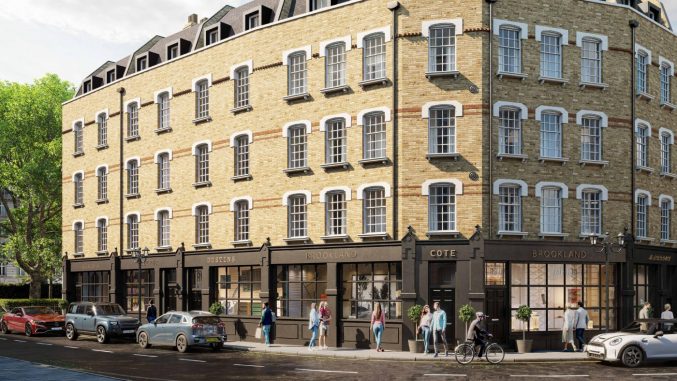What is development finance and how does it work?
By Bridging Loan Directory

Development finance is a staged loan, offered within the property refurbishment and construction sector.
It provides credible streams of finance, carrying a short to medium-term period, usually staged over 6 to 36 months.
Although similar to further streams of finance, including bridging loans, the key benefit of development finance is that funds can be released as and when required throughout a project.
When considering larger scale property renovations or ground-up builds, having immediate access to finance is very important.
Back-up plans may be required to complete the extent of a project, work to fix any problems or offer the small, yet meaningful finishing touches, ready for resale or rental.
Further benefits of development finance include the ability to request larger sums of financial support, prolonged term periods and the reliability that funds will be available to complete the build.
To gauge whether development finance is for you, how it works, and current eligibility requirements, see our complete guide.
We will also cover any additional streams of finance, along with a proactive checklist, in place to progress you through your development finance application.
What is development finance?
Completing a large renovation or a ground-up build can be costly.
Having the finances available, across a whole project will be very unlikely, unless you opt for development finance.
Development finance, in short is a stream of funds, in place to support construction companies, refurbishment projects and groundworks.
Similar to smaller renovations, borrowing a sum of money is normally necessary to complete the project efficiently.
In most cases, bridging loans will be utilised. However, for larger projects, having the reassurance that funds can be accessed at pinnacle phases, throughout the project is beneficial.
Development finance will usually be paid in stages.
An initial sum will be borrowed to cover the purchase of the property or land.
The second stream of funds will then be released ready to support the construction and refurbishment stages.
Along with the ability to forecast spends through these stages, a key benefit of development finance is that interest is charged as and when the sums are released; resulting in reduced interest rates, when compared to other loans.
Eligibility for development finance
As large sums of money are usually borrowed via development finance, which in some cases, may be to fund a brand-new construction company or project, safeguarding measures will be required by lenders.
To ensure that financial support will be used for a legitimate build and can be repaid once the project has concluded, eligibility will be judged by the below factors:
- The nature of construction/renovation
- The location of the build
- Its commercial capabilities
- Property development/construction experience of the borrower, including the extended team
- The borrower’s credit history
- The borrower’s residency
- The capacity to place a legal charge and personal guarantee over the property
- The status of the plans
- The borrower’s capabilities to pay the deposit and also repay the finance
- The strength and reliability of an exit strategy
- The strength of the property market within the local area
Once assessments have been made and a successful application has been submitted, development finance could be accessible to you.
However, if the above factors unfortunately cannot be fulfilled, or smaller streams of finance are required to fund your project, alternative loans are noted below.
Finding the right stream of finance for your project
Within the development finance umbrella, there are also additional forms of financial support available, in place to suit all projects.
As renovations and builds vary in size, a dedicated stream of funds will be suited to your needs.
Bridging loans
A bridging loan offers financial support to bridge from one scenario to the other.
This form of finance will usually support individuals who are purchasing a new property, but are yet to sell their existing one, or those who require rapid access to funds to purchase land or property.
Bridging loans are commonly used for smaller scale projects.
They are available over 3 to 18 months, offering a flexible yet immediate source of financial support.
With this in mind, if you’re completing a short-term refurbishment, requiring a small sum of money, a bridging loan will be beneficial.
If you however need access to higher funds, with a prolonged term period, development finance will be recommended.
Commercial mortgages
If your property aim is to purchase a commercial building, such as an office or warehouse, a commercial mortgage will offer greater value when compared with development finance.
As consistent repayments will be required, a commercial mortgage can usually span over 5-10-years, yet higher premiums will be attached.
Auction finance
If you’re planning on purchasing at an auction, where you require immediate funds to cover the 28-day payment policy, auction finance or a bridging loan will be recommended.
Development finance can be used in some cases. Yet, if you require speed, a dedicated stream of auction finance will offer this.
Ground-up developments and large renovations
In the case where you’re developing a new-build property, making drastic changes to land, or hope to complete a large-scale renovation project, development finance will provide the greatest source of finance for you.
For eligibility requirements, please scroll up.
How does development finance work?
If you’re looking for a larger sum of financial support, which is dependable and fit for purpose, development finance is ideal.
By submitting an application, ensuring that eligibility requirements are met, you’ll likely receive the first stream of support to secure your property or land.
From here, your second stage of finance will be released to mark the beginning of renovations/building works.
Known as drawdowns, staggered payments will carry interest from their release, which will be broken down by combining the lenders annual rate and a reference rate.
The amount you can borrow will depend on a number of factors, including:
- Your security levels
- The time span that you require financial support for
- Your credit history and liability
- Your experience and positive track record in the property/construction market
With strong eligibility, you’ll likely be able to borrow 50-60% of the purchase price of a new property, or up to 100% of the purchase price by presuming that this doesn’t advance beyond 60-70% of the gross development value.
Timescales of development finance will be based on the length of time a project will take, along with additional time to ensure that a strong exit strategy can be activated.
Repayments can be made through a singular development exit bridge payment, or through a term mortgage if the property is set for the rental market.
To increase eligibility and a smooth experience of development finance, having a realistic exit strategy must be in place.
Plans which indicate your repayment capabilities are necessary, whether that’s through selling the new property or renting out your development.
Forecasts can also be made to strengthen your exit strategy based on the current market value of property within your location.
Is planning permission required prior to securing development finance?
For large scale builds to take place, planning permission is customary.
In order to secure fair development finance, acquiring planning permission prior to submitting your application for financial support will be recommended.
Although a small proportion of lenders will offer development finance, on the basis that planning permission will be guaranteed within the time frame, a large majority will require watertight authorisation.
In this case, ensuring that your building or renovation plans can be built on your selected plot will strengthen your application for development finance, no matter its form or sum.
Apply for development finance with our checklist
If you’re leaning towards development finance as your financial safeguard, below is a proactive checklist to follow and complete before submitting your application.
Increase your eligibility with the following checklist:
- Ensure that development finance is the most suitable stream of finance for your project.
- Condense important details about your previous builds or renovation projects, supporting your capabilities as a company to fulfil your next project.
- Ensure that you have architectural drawings and specific plans of your project, including realistic time frames.
- Form a breakdown of each construction phase and their time frame.
- Provide a breakdown of project costs, highlight the value development finance will bring to the project.
- Gauge an estimated gross development value.
- Ensure that your business accounts and tax returns are available, watertight and legitimate.
- For safeguarding purposes, a list of assets and liabilities may be required. Collecting all details will be advised.
- Forming a reliable and strong exit strategy.
Development finance FAQs
At Bridging Loan Directory, we work with a wide range of development and bridging finance providers. As you can imagine, we are regularly asked a number of questions in relation to the subject and we have decided to answer some of the most common below.
What is a development loan?
A development loan is property development finance for developments such as heavy refurbishment or construction projects.
Can first-time developers get development finance?
Most lenders will provide development finance for both first-time and experienced developers. We would recommend contacting the lender and discussing your options.
Is it possible to lend against sites without planning permission?
Some lenders are happy to provide funding even if your project is still awaiting planning permission.










You must be logged in to post a comment.